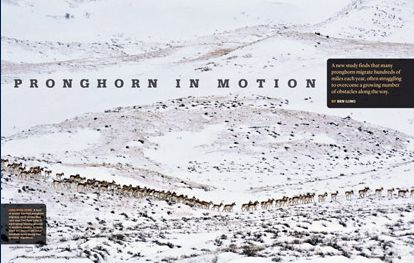Our Blog
SPECIES GUIDE: ANTELOPE
REGULATIONS & MAPS
-
Regulations
Regulations for upcoming seasons are posted online throughout the year. Antelope regulations are typically posted late February.
Plan Your Hunt Online
Launch maps, obtain legal descriptions, regulations, and statistics all in one place.
SEASONS
-
These dates are provided only as a general reference. Check current regulations or use FWP’s online Hunt Planner for specific dates.
2022 Antelope Season Dates
Antelope 900 Series
August 15 – November 13Archery
September 3 – October 7General
October 8 – November 13
LICENSES
General Antelope License
Details: General licenses are limited to specific districts. Applicants are required to pay full license fee. Cost includes $5 nonrefundable application fee.
Fees:
-
Resident: $19
-
Nonresident: $205
Antelope Multi-Region Archery
Details: Either-sex archery only license. License limited to specific hunting districts. Must be applicant’s first, and only choice. Must purchase a Bow and Arrow (Archery) license prior to hunting. Applicants are required to pay full license fee. Cost includes $5 nonrefundable application fee.
Fees:
-
Resident: $19
-
Nonresident: $205
SPECIES GUIDES

MONTANA OUTDOORS
Pronghorn in Motion
A new study finds that many pronghorn migrate hundreds of miles each year, often struggling to overcome a growing number of obstacles along the way.
Antelope Hunting
Though commonly called antelope, pronghorn are not related to gazelles, eland, or other true antelope species, which are native only to Africa and Asia. Pronghorn are an endemic North American ungulate, a holdover from when mastodons, ground sloths, and other ice age mammals roamed the continent. In all the world, no other species is like the pronghorn. Its closest genetic relative is, of all things, the giraffe.
Pronghorn have lived in North America for millions of years, surviving glacial eras, volcanic ash winters, and predation by the now-extinct American cheetah. But it took humans only 50 years around the turn of the 20th century to nearly wipe out the animals. After explorers and trappers opened the West, the teeming herds of wildlife observed just a few decades earlier by Lewis and Clark were quickly overrun. Ambitious pioneers punched railroads and telegraph lines across the prairie, plowing arable land and replacing hoofed wildlife with cattle. Pronghorn were shot by hungry farmers and unregulated market hunters. By the early 1900s, the total pronghorn population in North America was reduced to fewer than 15,000.
Conservation-minded hunters and landowners eventually repopulated the plains with the fleet-footed animals. Working with state biologists, they trapped pronghorn in population strongholds and relocated the animals in historic habitat. Within decades, pronghorn had recolonized the American West, although in nowhere near pre-settlement numbers and only in marginalized fragments of their historic range.
Today, pronghorn number over 1 million across North America. In some parts of the West they are common enough to take for granted.

Facebook Comments